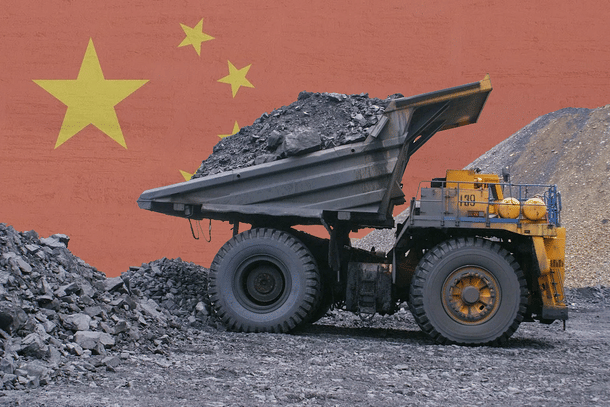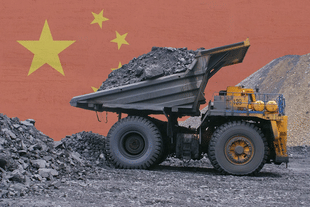News Brief
China's Power Crisis Likely To Worsen As Floods Ravage Coal Production Sites
Bhaswati Guha Majumder
Oct 11, 2021, 02:49 PM | Updated 03:38 PM IST
Save & read from anywhere!
Bookmark stories for easy access on any device or the Swarajya app.


Heavy rains and flooding have exacerbated mine closures in China's largest coal-producing area, driving up prices and complicating Beijing's efforts to bolster energy supply, stifling the country's primary source of electricity.
After trading began on 11 October, China's coal futures on the Zhengzhou Commodity Exchange rose as much as 11.6 per cent to an all-time high of $218.74 a ton. The CSI Coal index of major miners listed in Shanghai and Shenzhen gained as high as 2.1 per cent, partially correcting losses from last week when authorities order to increase coal production sent prices soaring.
Shanxi, the neighbouring Shaanxi province and the Inner Mongolia region provide a great majority of China's domestic coal. But floods have forced the closure of 60 of Shanxi province's 682 coal mines, an area that has generated 30 per cent of China's coal supply this year, adding to the country's deepening energy crisis, which is threatening its economic growth.
Around 120,000 people were displaced by the floods in Shanxi and according to estimates published by the provincial government, it harmed approximately 190,000 hectares of crops.
Other extreme weather occurrences have also exacerbated China's energy crisis, with this year's unusually dry weather in the south hampering hydropower generation.
Power rationing for industrial and, in certain cases, residential users have resulted from local circumstances such as an anti-corruption effort in the coal industry and mine closures to prevent air pollution around national events.
According to Financial Times, Michael Taylor, chief credit officer for Asia-Pacific at Moody's said: "We expect the power cuts and resulting production disruptions to be temporary. But if they continue for an extended period, such as into winter, the effects will spread across the domestic — and potentially global — economy."
The mine closures are straining China's efforts to increase coal output and assure power supplies for the winter season. The powerful State Council announced last week that increased electricity tariffs would be permitted to encourage generation in the face of rising expenses. The council also stated that all coal-fired power will be traded in the market rather than being subject to controlled prices and that qualified coal mine capacity would be increased.
China's government has instructed miners to cut no corners in order to enhance coal supplies and has given them permission to continue operating at full capacity even after meeting their annual quotas.
However, CITIC Securities analysts—a Chinese full-service investment banking company—estimate that despite the efforts, China would face a coal supply imbalance of 30 million to 40 million tonnes in the fourth quarter.
According to UBS Group AG, a shortage of fuel may reduce industrial power use by 10 per cent to 15 per cent in November and December 2021, resulting in a 30 per cent slowdown in activity in the most energy-intensive industries like steel, chemicals and cement manufacturing.
However, electricity costs would be permitted to climb by up to 20 per cent against a benchmark, compared to a present maximum of 10 per cent, according to the State Council.
Analysts led by Sun Binbin at Tianfeng Securities Co. estimate that due to the impact of energy-intensive industries, such an increase will result in a 0.91 per cent increase in overall inflation, translating to less than a 0.5 per cent rise in the consumer price index and about a 1 per cent rise in the producer price index.
However, the impact of the turbulence in China's energy markets, according to analysts, could extend beyond global power prices.
Long-term power shortages in China, according to Taylor of Moody's, might reduce factory output, which "could disrupt supply chains across Asia-Pacific given prevailing linkages, which will also increase prices along the chain".
According to Louis Kuijs, senior Asia economist at Oxford Economics: "If the electricity shortages and production cuts continue, they could become yet another factor causing global supply-side problems, especially if they start to affect the production of export products."
Craig Botham, chief China economist at Pantheon Macroeconomics said that it appears to be another "stagflationary shock" for manufacturing, not just in China, but globally. Additionally, Bothan noted: "The price increases by now are pretty broad-based—a consequence of China's deep involvement in global supply chains."





